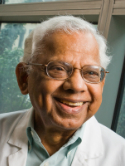| Abstract: |
The molecular mechanism involved in the process of antigen-driven somatic hypermutation of Ig genes is unknown, but it is commonly believed that this mechanism is restricted to the Ig loci. B cell lymphomas commonly display multiple somatic mutations clustering in the 5'-regulatory region of BCL-6, a proto-oncogene encoding for a POZ/Zinc finger transcriptional repressor expressed in germinal center (GC) B cells and required for GC formation. To determine whether BCL-6 mutations represent a tumor-associated phenomenon or reflect a physiologic mechanism, we screened single human tonsillar GC B cells for mutations occurring in the BCL-6 5'-noncoding region and in the Ig variable heavy chain sequences. Thirty percent of GC B cells, but not naive B cells, displayed mutations in the 742 bp region analyzed within the first intron of BCL-6 (overall frequency: 5 x 10-4/bp). Accordingly, an expanded survey in lymphoid malignancies showed that BCL-6 mutations are restricted to B cell tumors displaying GC or post-GC phenotype and carrying mutated Ig variable heavy chain sequences. These results indicate that the somatic hypermutation mechanism active in GC B cells physiologically targets non-Ig sequences. |
| Keywords: |
human tissue; unclassified drug; oncoprotein; human cell; major clinical study; somatic mutation; mutation; dna-binding proteins; proto-oncogene proteins; polymerase chain reaction; neoplasms; proto oncogene; b-lymphocytes; transcription factors; cell transformation, neoplastic; molecular cloning; b cell lymphoma; germinal center; lymphoma, b-cell; immunoglobulin gene; immunoglobulin variable region; immunoglobulin heavy chains; protein bcl 6; zinc finger protein; polymorphism, single-stranded conformational; proto-oncogene proteins c-bcl-6; genes, immunoglobulin; leukemia, b-cell; humans; human; priority journal; article
|




